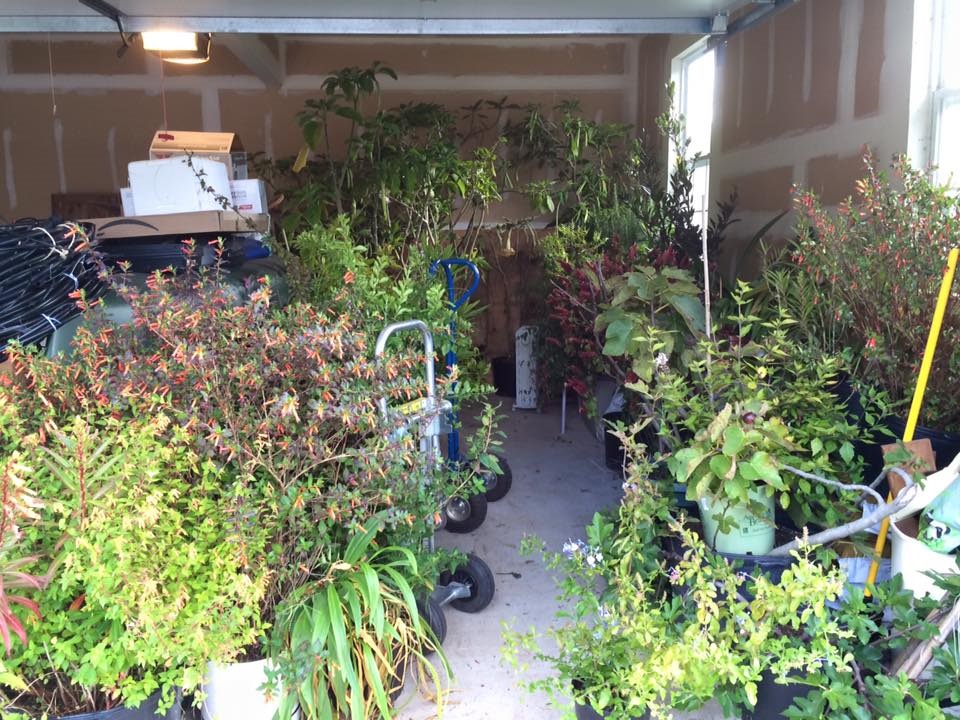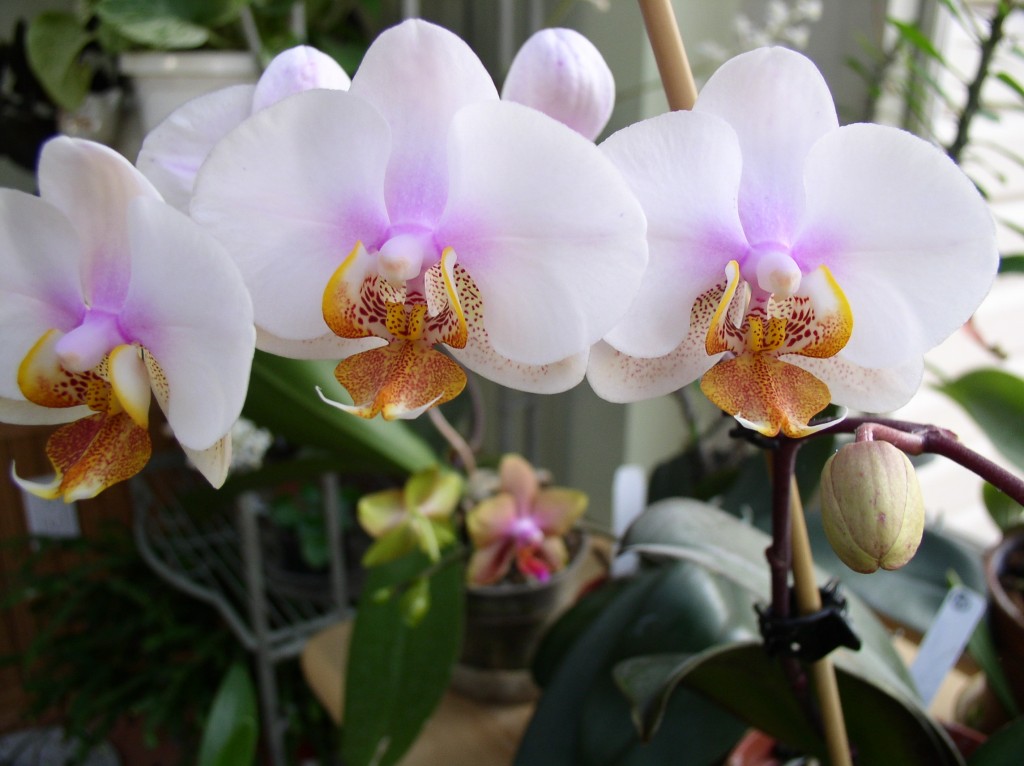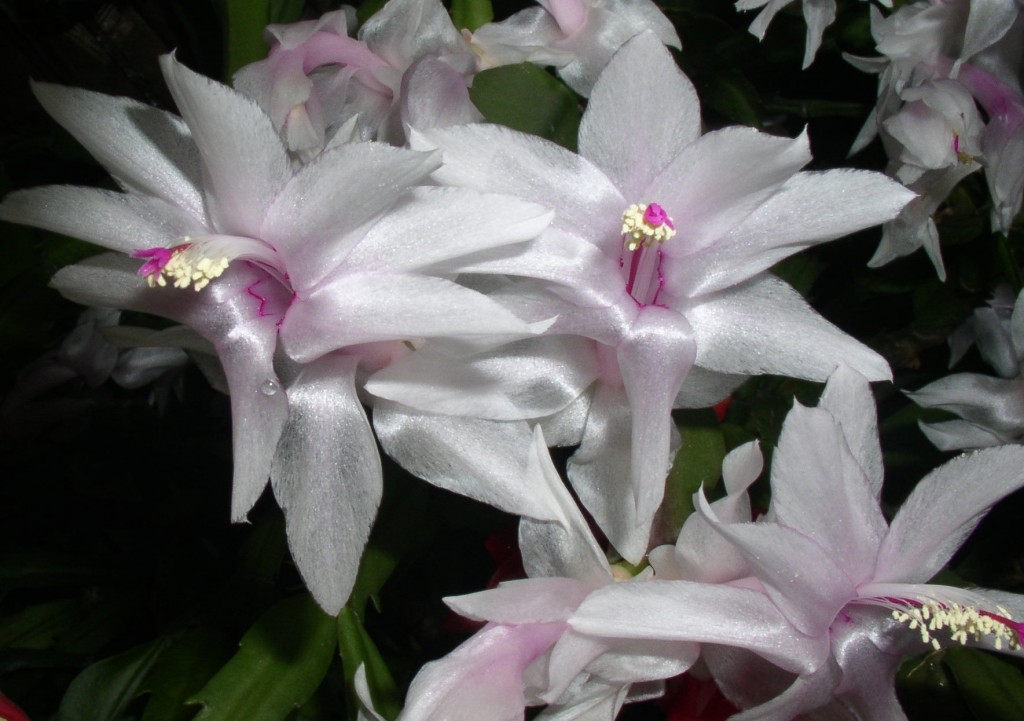During the chilly dark days of winter, our houseplants and overwintering tropicals remind us that green life still exists, which gets us crazy gardeners through what can be a depressing time of year. Living with indoor plants is a subject near and dear to my heart, and I have lots of experience to pass along to you. I thought I’d start by talking about how to overwinter the large tropical plants that many people buy in spring, such as hibiscus, elephant ears, cannas, lantana, brugmansia, and mandevilla, and provide some sound advice for houseplant care so you may fully enjoy your indoor garden all winter.

Bird of paradise makes a cheerful indoor companion. Photo © Alice Raimondo.
As I write this, it is a relatively mild mid-December day but far too cold outdoors for tender tropicals. Summer provided all the things they needed to survive: sunlight, humidity, water, and lots of air circulation. How can we give them what they need indoors for the next several months before moving them outside once more? I’m sure I’m not the only one whose tropical plant’s leaves all turned yellow and dropped off a few days after bringing it indoors in the fall. A common mistake is waiting too long to bring these plants inside; it’s better to bring them indoors in late August before nighttime temperature start to drop. This is especially true for hibiscus or mandevilla; however, some leaf drop with them should be expected. Indoor environments have low humidity, particularly during winter when the heat comes on frequently, so plants drop leaves to reduce water loss.
Fear not, your plants will adjust, provided you site them properly. If placed near sunny south-facing windows and away from radiators, hibiscus plants will perform quite well as houseplants for a while, at least until whiteflies or aphids likely arrive. Mandevilla can be a bit trickier as a houseplant, often losing all of its leaves during the winter and going semi-dormant. Be very careful how you water them then; I have killed several, I fear, from overwatering alone. Mandevilla can also be a magnet for scale and mealybugs in the home, so if other houseplants are nearby, beware! Lantana is best not brought indoors unless you have a sunny, dry, cool location where it can grow.

My garage is home to dozens of plants during winter. Photo © Alice Raimondo.
Elephant ear tubers and canna fleshy rhizomes can be stored dormant in an unheated location with no light, provided it gets no colder than the upper 40s. If your cannas and elephant ears were dug from the ground after the first frost, they will overwinter very well in paper bags or in cardboard boxes in temperatures in the low 50s. Another plant that stores equally well in garages where it will go dormant is brugmansia. No need to water it but a few times, very lightly, throughout the winter so its root ball doesn’t dry out completely. Keep brugmansia cool at temperatures in the upper 40’s to near 50 degrees; any warmer, and it will break dormancy and begin to grow. You can store this large woody tropical indoors from year to year until the plant is too big to fit in the garage. Even then, you can lay them down in the garage after they’ve grown too tall; these plants are indestructible! I currently have flowers on mine, as they haven’t yet gone to sleep yet for the winter.

Phalaenopsis orchids do fine with enough humidity. Photo © Alice Raimondo.
If you aren’t brave enough to try overwintering these large tropical beauties, which are often sold as annuals, there are many houseplants to grow that are just smaller counterparts of their larger cousins. Peace lily, African violet, phalaenopsis orchids, and many foliage plants will chase your winter blues away as you garden indoors. Or perhaps you have space to grow large palms or bird of paradise. Plan your indoor garden as you do your yard: consider sun exposure, water requirements, and home temperature. One word of advice: water. Overwatering is the most common mistake when it comes to houseplants, so be careful to not kill your plants with too much love. Drooping or yellowing leaves is a symptom of too little water, but it’s also a symptom of watering too frequently.
The Horticulture Diagnostic Lab often receives calls regarding sick houseplants during the winter. If you have questions about caring for specific plants, call us at the Horticulture Information line (631)727-4126. In the meantime enjoy your little bit of the tropics indoors, and dream about spring.
Alice Raimondo is Horticulture Consultant for CCE Suffolk. She can be reached at aw242@cornell.edu or 631-727-77850 x335.







